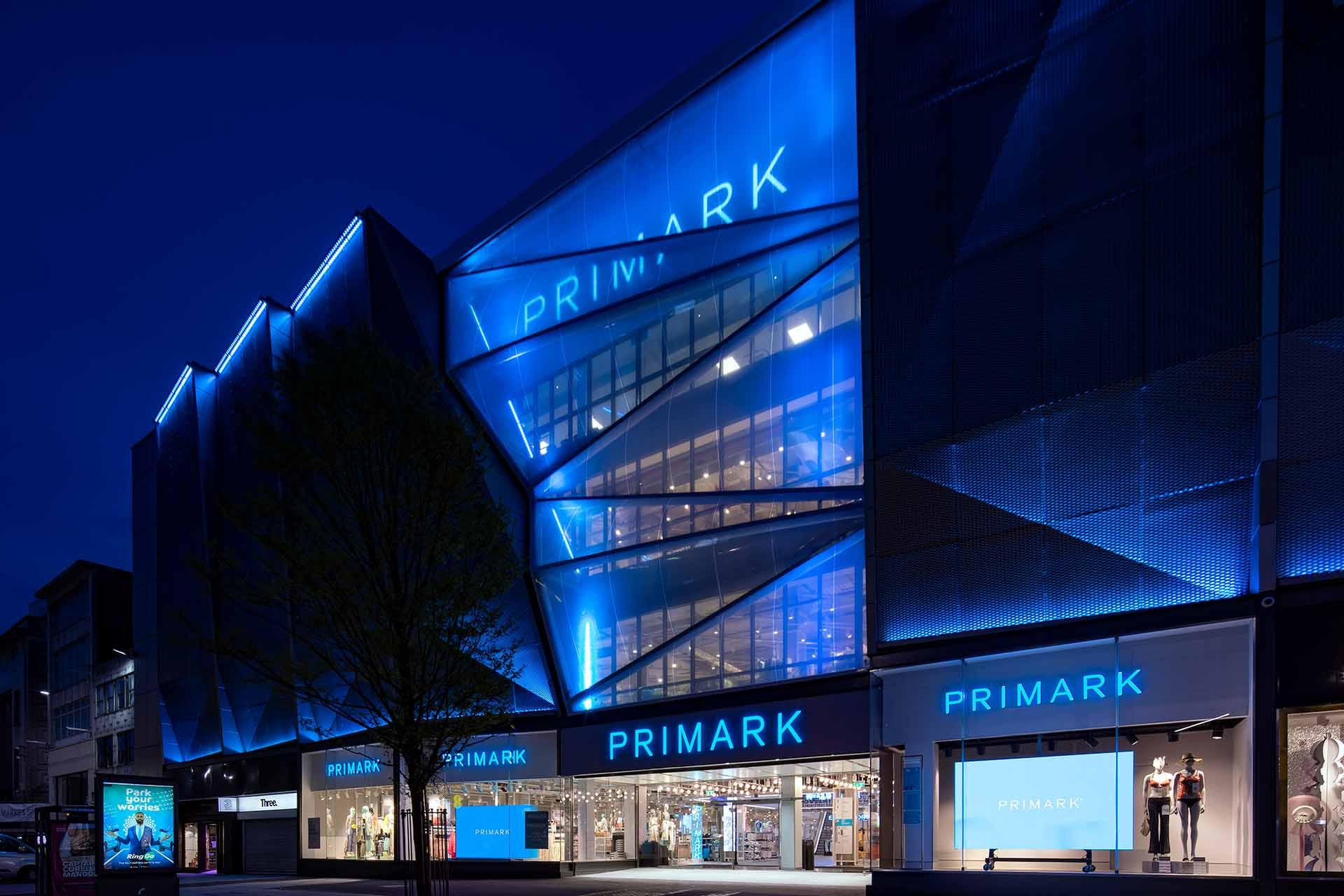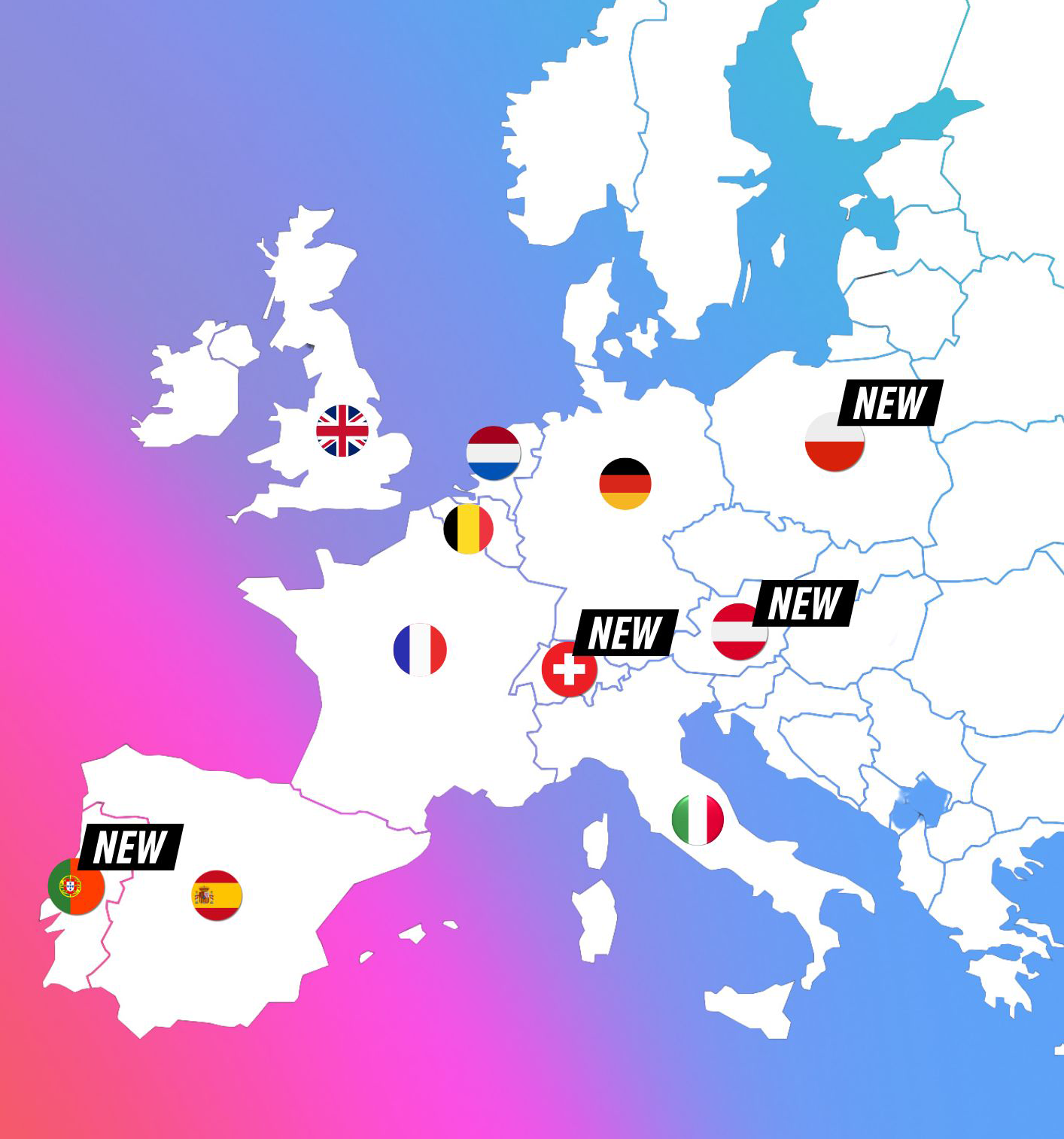Follow us on
Finding the right retail location is a major challenge for any brand, regardless of its sector or size. MyTraffic offers you the approach and key steps to finding the best retail location.
Let's take the example of a location in the city center, in the heart of a shopping street: 36 Rue du Commerce in Paris. A franchisee of a burger chain wants to know if this commercial location is suitable for developing their business.
Key steps for finding the best commercial location:
1. Define a catchment area
Methodology
The catchment area corresponds to the area around a point of sale from which a brand's potential customers come. It must be defined based on several factors: the resident population, the working population, points of interest (including transportation, schools, institutions), and the merchandising mix in the area. These are elements that you will need to study closely after defining your catchment area.
Before finding the right commercial location, it is therefore advisable to map out potential catchment areas and study the various success factors mentioned above. The ideal approach is to define the isochronous zone that interests you. For example, 10 minutes on foot or 5 minutes by car around the proposed commercial location.
Practical example:
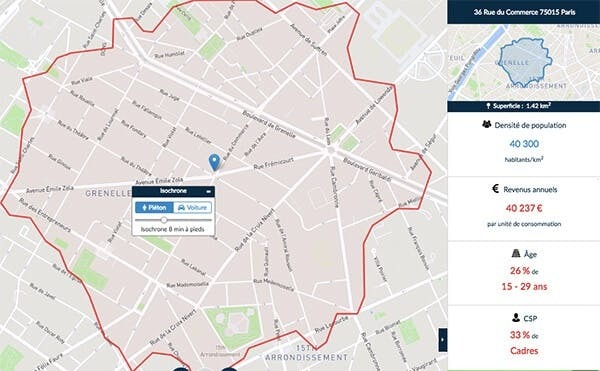
In the case of 36 Rue du Commerce in Paris's 15th arrondissement, let's put ourselves in the shoes of a franchisee who wants to open a mid-range burger restaurant there. Defining the catchment area will be fairly quick. Given the number of restaurants of this type in the capital, it is better to define a fairly narrow area. We will therefore start by analyzing an isochronous zone within an 8-minute walk
2. Analyze key socio-demographic data
Methodology:
Once the catchment area has been defined, the first factor to analyze is the population. Everything depends on the type of population you want to target with your commercial premises.
- Resident population
- Working population (offices)
- Shopping population (shopping areas attracting occasional shoppers)
- Tourism and leisure population
Depending on the type of population you want to reach, you need to analyze the most relevant demographic indicators (population density, average household income, workforce density, age, household income, vacant housing, attractiveness of the area, etc.). This step is crucial in order to validate that the area you are considering is a good fit for your target audience.
Case Study:
For our mid-range burger business, we are interested in a young resident population and working people in the neighborhood
What does the catchment area analysis on the MyTraffic platform reveal
For the resident population:
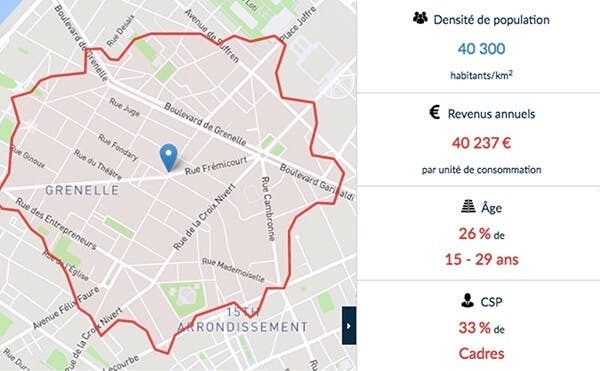
1) High population density (40,455 inhabitants/km²).
2) Majority of young people aged 15-29 (26%), which is excellent as this is the age group with the greatest potential for our business.
3) High average income. The population is relatively well-off (around €40,000 compared to €29,000 on average in France).
For the working population:
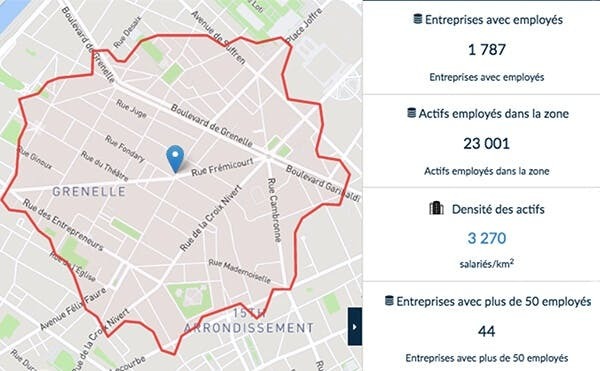
Labor force indicators reveal a high density of workers within an 8-minute walking radius of the location.
Correspondence: satisfactory.
3. Identify nearby points of interest
Methodology:
To ensure you find the right commercial location, you need to analyze the points of interest in the area (tourism, leisure, transportation, schools, etc.)
Taking transportation as an example, you need to make sure there are no unpleasant surprises after your store opens. You may think you are well located (after all, you are in the city center), but you may realize too late that the location you have chosen is poorly served by public transport. It is therefore important to identify tourist attractions that bring in a lot of traffic.
Case study:
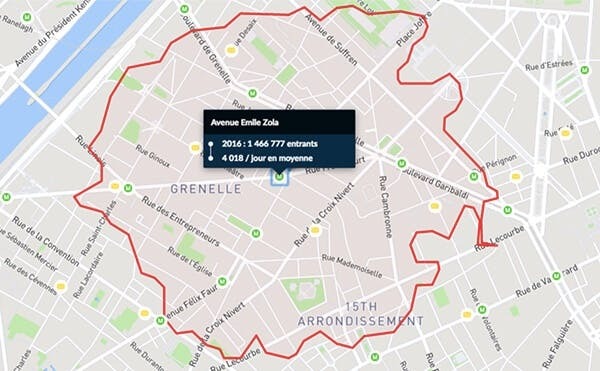
n the case of a mid-range burger restaurant, proximity to students is important. Unfortunately, the defined area has few students and schools. However, the area has a high concentration of working people and is well served by public transportation, with a subway station close to the location.
4. Understanding your commercial environment
Methodology:
To take your choice of commercial location a step further, you also need to analyze the commercial environment. Where are your competitors located? What is the density of brands in your sector of activity?
Case study:

There are 152 fast food outlets in our catchment area. So there is competition around the location, but this competition is less intense on the street we are targeting, as can be seen on the heat map.
5. Accurately measuring foot traffic
Methodology:
Once the analysis of the area is complete, the most important factor to consider is foot traffic. Does your commercial location have sufficient exposure to pedestrian traffic? This data is difficult to obtain, but crucial in choosing the right commercial location.
Why? Traffic can vary greatly from one end of a street to the other, or even from one sidewalk to another. It gives you an idea of the potential customer base your future store can reach.
Case study:
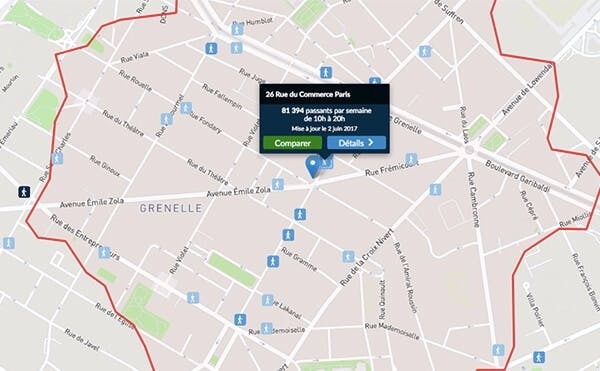
Conclusion: choosing your commercial location based on key success factors
To find and choose the right commercial location, it is crucial to analyze a set of factors that will be decisive in the success of your business.
Today, the conclusion is clear: foot traffic is the most decisive and subtle factor in the performance of a commercial location. MyTraffic has developed an ultra-precise and reliable methodology for quantifying pedestrian traffic, with detailed traffic figures by day and hour.
Feel free to write to us for more information. Get a free pedestrian traffic point from our database by contacting our team.
To resume
Finding the right commercial location involves combining data analysis with an understanding of the local area. First, you need to define the catchment area to find out where customers will come from, then study the socio-demographic characteristics to check that the target audience is present. The analysis is completed by identifying points of interest and surrounding businesses in order to assess the attractiveness and local competition.
Finally, measuring foot traffic allows you to estimate the real potential for customer traffic. By cross-referencing this information, you obtain a comprehensive and objective view of the area, which is essential for choosing a location with high commercial potential.








